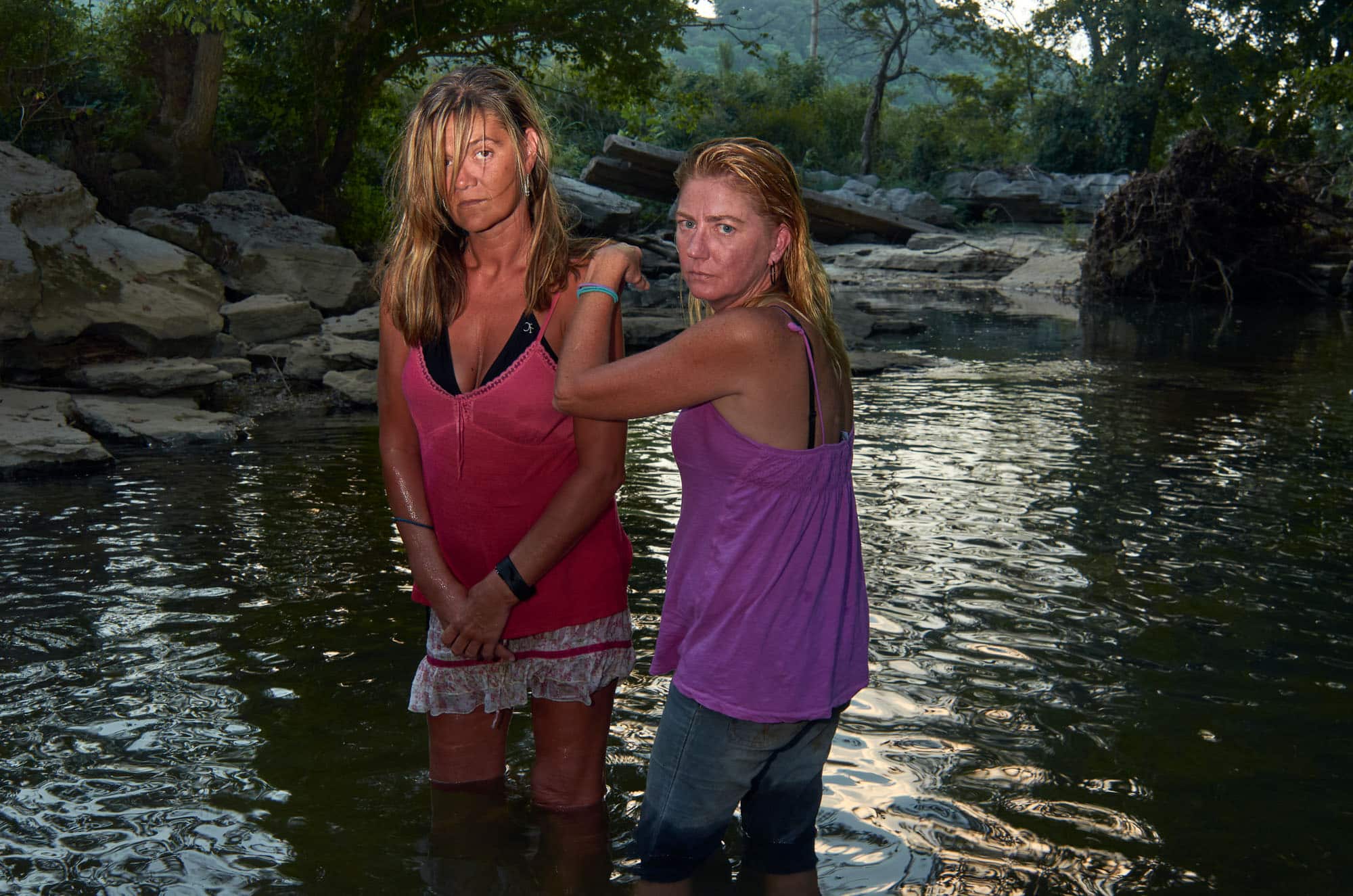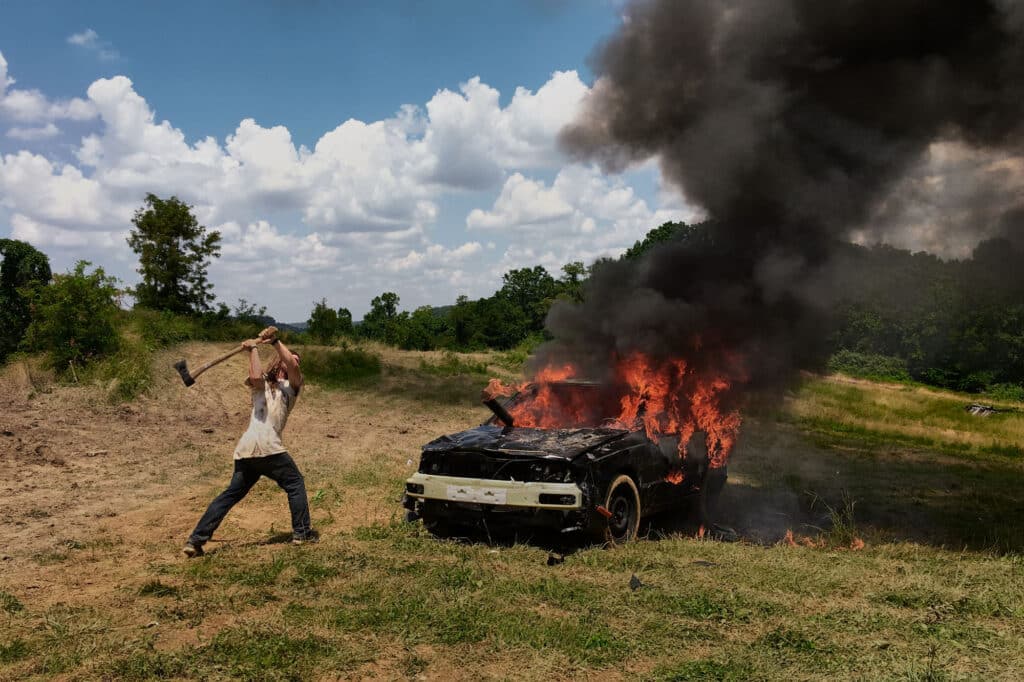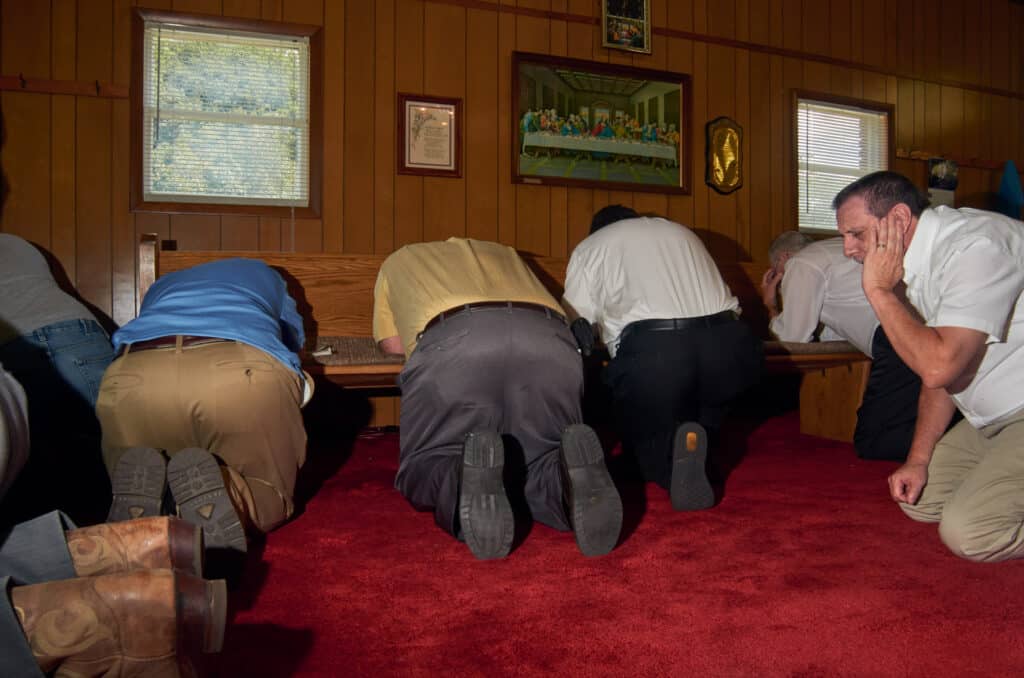Stacy Kranitz is a living mystery. Amusing, disarming, sincere, her glance hard to read. Crossed by a shade of the best kind of madness, it succeeds in framing life as an uncharted, wondrous path.
The Kentucky-born Californian spent a few years in Tennessee as a child, and went back to live there as an adult. As she created the body of work that first shaped her identity as a photographer, focusing on post-pubescent youth in Appalachia, she was living for years out of her car, traveling in the region.
One of her best-known photographs captures a young man smashing a car on fire with an axe. “Kids from that generation often grew up with parents who were addicted to opioids. With nowhere to be, or to go”, says the photographer.
Appalachia has long been the poster child for anything that’s gone terribly wrong in the United States, from the opioid crisis to white supremacy, from the lack of education to unemployment. Simplistic, sensational media coverage has left communities with a strong distrust for any form of journalism. What distances Stacy Kranitz’s photographs from most of the reporting aimed at the area is her strong sense of proximity and a complete, self-evident lack of judgement.
“Those first years changed everything because of the intensity of being in a place where you’re vulnerable yourself. I didn’t have a comfortable place to go. I used to sit at McDonald’s to use the internet. In the summer it was too hot to sleep in the car anytime after 8 am, so I had to be outside. People would offer me showers and feed me. They didn’t see me as someone coming in with expensive equipment from a condition of privilege. It made a big difference.”
A kaleidoscopic character, the photographer herself became part of the work. Rejecting any opportunity to exert full control or authority, she sometimes hands the camera to local friends who become co-authors of provocative, cryptic scenes. Kranitz sits on a laundry machine in a rowdy basement, fiercely kissing a man. Kranitz stands on river rocks in a blue, flowery, foot-long dress, looking at the camera with an inscrutable expression.
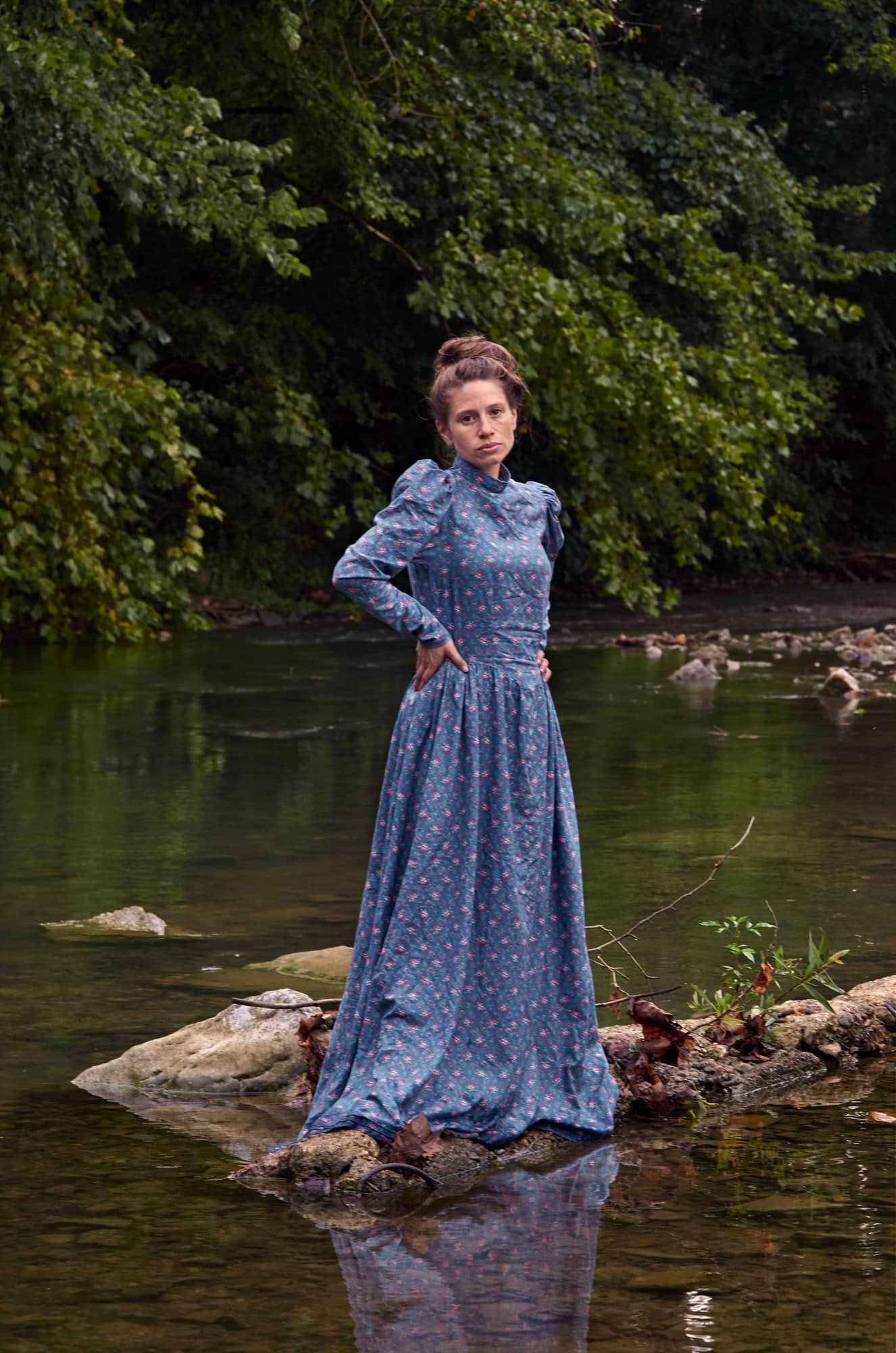
“It’s a mix of planned and unplanned interactions. I usually get the outfits when I stop at thrift stores while traveling in the region. A lot of women in conservative churches in Appalachia wear these kinds of long, flowery dresses. My hair is also long and there’s some religious connection to not cutting your hair, so people constantly mistake me for a fundamentalist Christian, just because of the style. Here we have more churches than anything. More churches than grocery stores, more churches than Dollar General.”
Stacy Kranitz never fully embraces nor rejects any stances. Her position is constantly shifting, playing along the fluid boundary between life and art, reality and performance. Growing up Jewish, she became fascinated with Leni Riefenstahl, whose filmography includes unsettling Nazi propaganda films. “I was in high school when her autobiography came out. I became obsessed with her arrogance. I think she was the first woman to act in a film that she also directed and edited, and I thought this is who I want to be. Obviously not someone who participates in genocide, but she was able to reinvent herself about 20 times.”
Another influence came from the 1967 novel Christie, about a young missionary woman who “goes into the mountains of Appalachia to teach the poor backwards people to read and write and clean themselves.” Kranitz compares the role of the missionary to the one of the photojournalist, with both characters heading to far away places placing a moral agenda on the people they meet. “I started traveling around and I saw how much this place has been harmed by photojournalism. And thought that because of it, this could be the right place for a project that critiques photography’s shortcomings.”
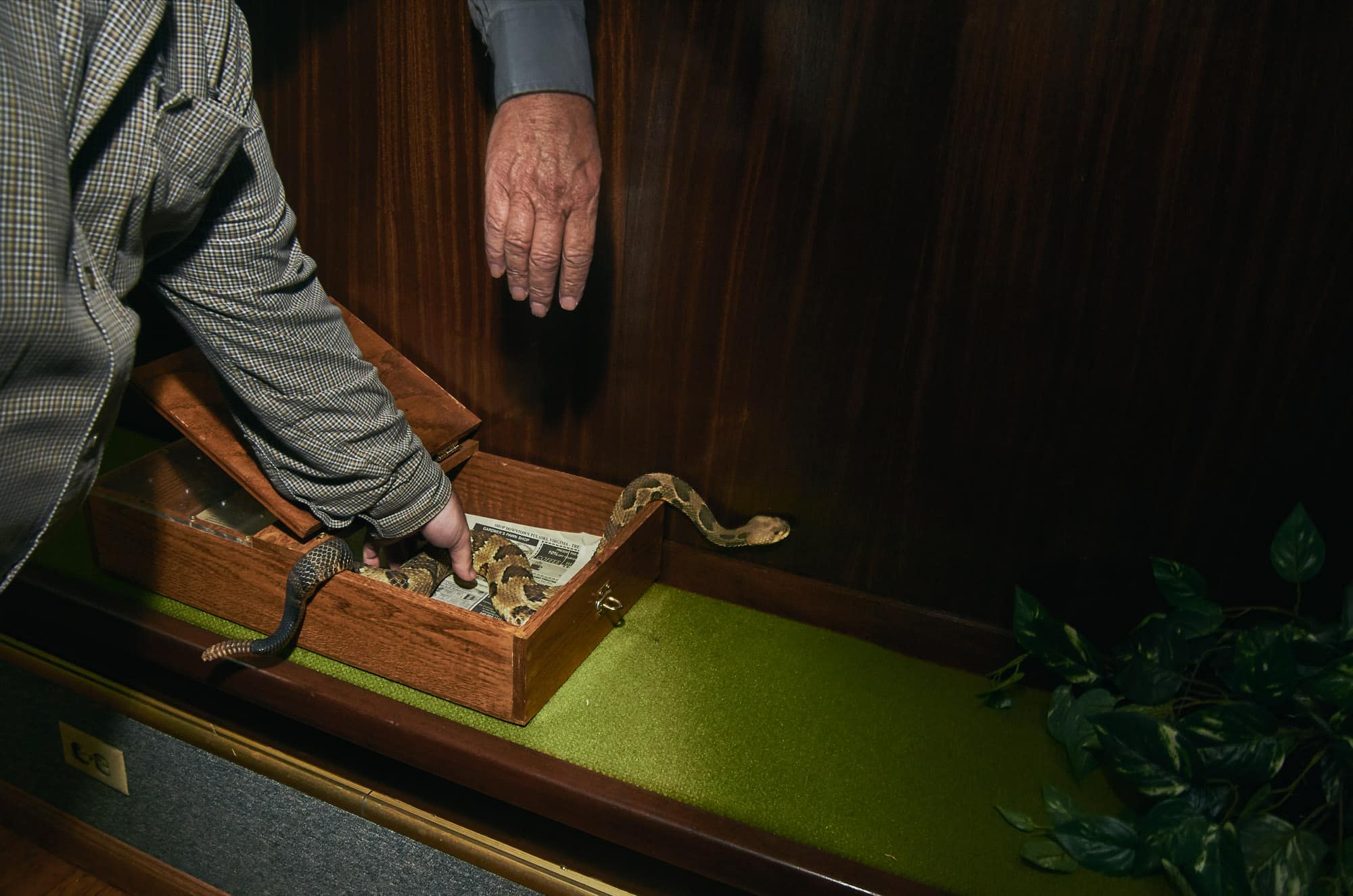
Stacy Kranitz’s work is a reminder that any time a camera comes into play, reality becomes a film where actors play themselves. Since subjectivity is all we’re left with, it better be as honest as possible.
The text of the book follows the same line of thought. Sourced from a public section of The Mountain Eagle, a local newspaper in Letcher County, Kentucky, it is a mosaic of messages written by members of the community and meant to be read by neighbors, acquaintances or estranged family members, offering a glimpse over the troubles and debates of a microcosm where almost everyone knows each other.
A lesbian woman was not allowed to attend her partner’s funeral, a man reaches out from prison asking strangers to write to him, someone complains about an Asian Elvis, someone else’s wife “is nine months pregnant and still being prescribed 300 narcotic pills a month, 10 a day”.

Cornerstones in people’s daily lives, Walmart and the Bible become frequent protagonists of scenes that mix deep suffering and trivial scuffles, the coal industry and Black Lives Matter, crystal meth and the rise of Trump, creating a background murmur whose voices somehow end up being tragic as much as relatable.
Where most photographers and journalists try to mold reality into something that makes sense, to make it easier to read, smoother to digest, Stacy Kranitz is not scared to do the opposite, embracing life as beautiful and cruel, in all its contradictions. Her work is rooted in empathy and human fragility, with a taste for mischief.
The book As it Was Give(n) To Me is published by Twin Palms Publishers and available at the price of 103 £.
